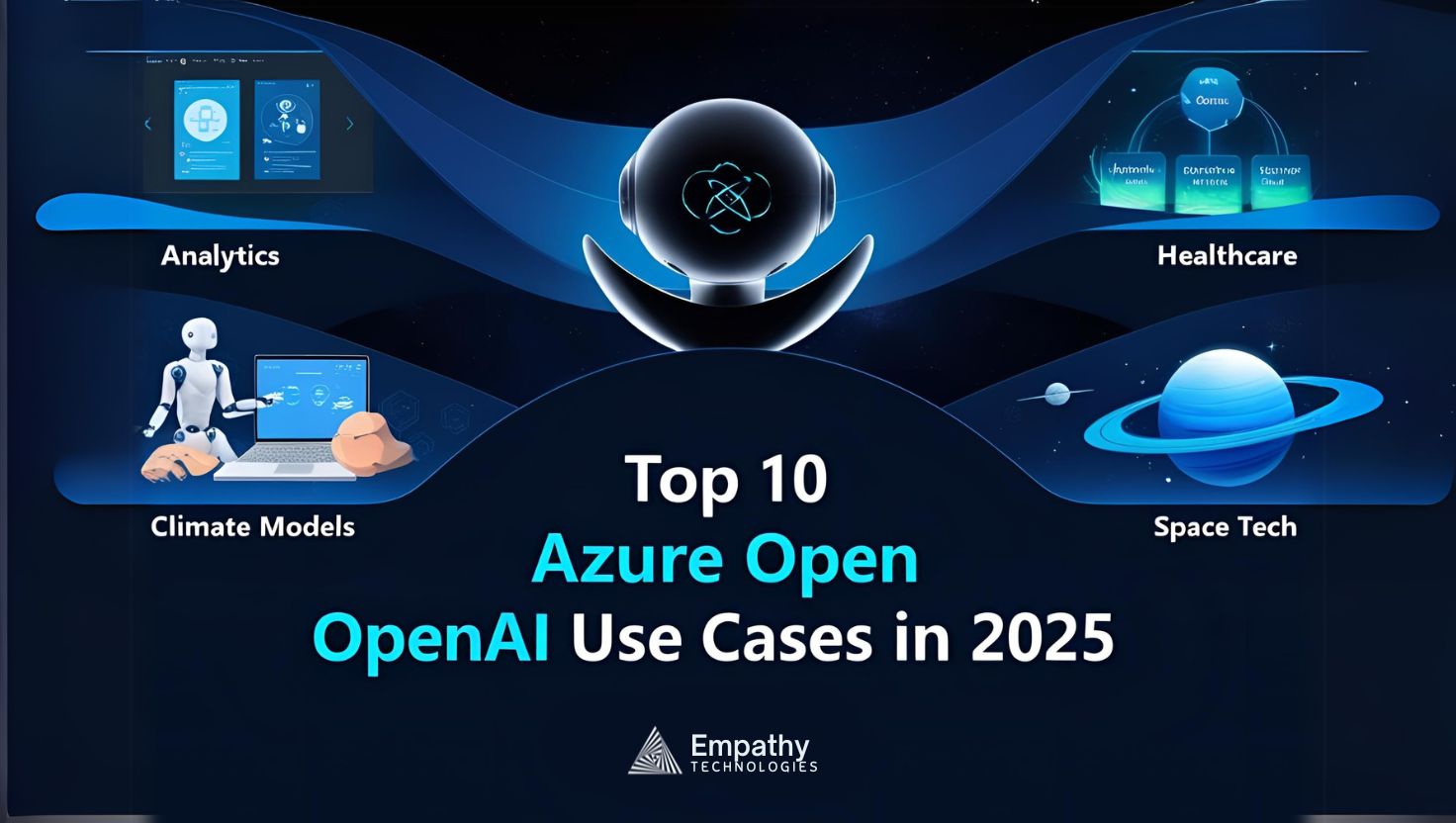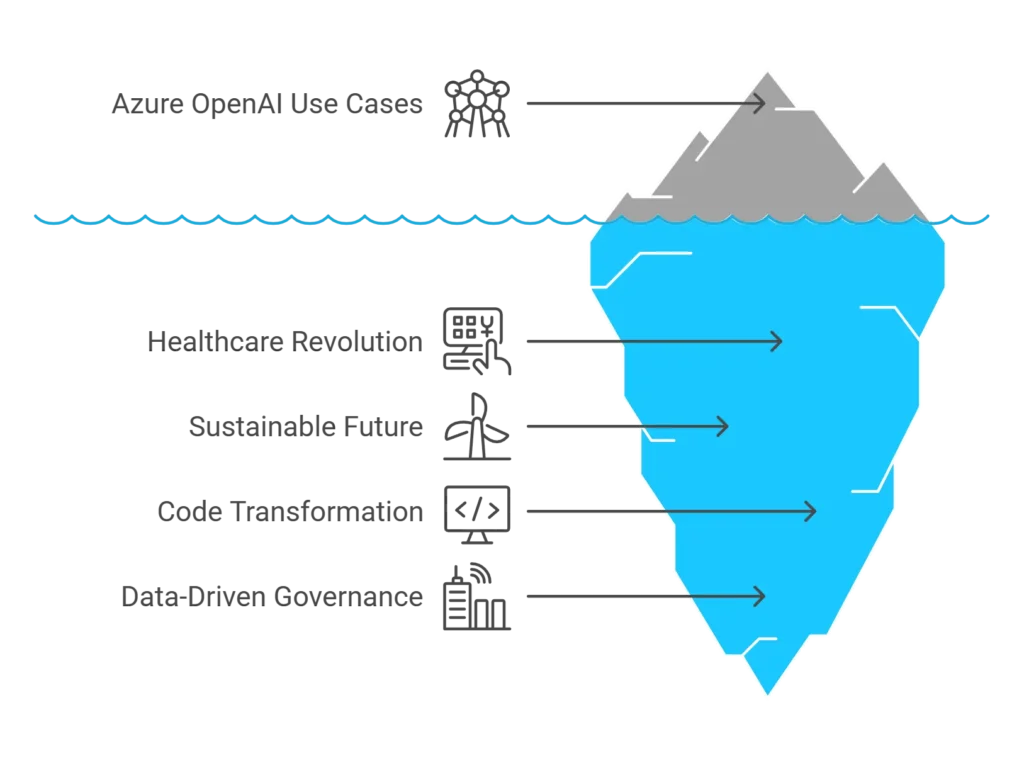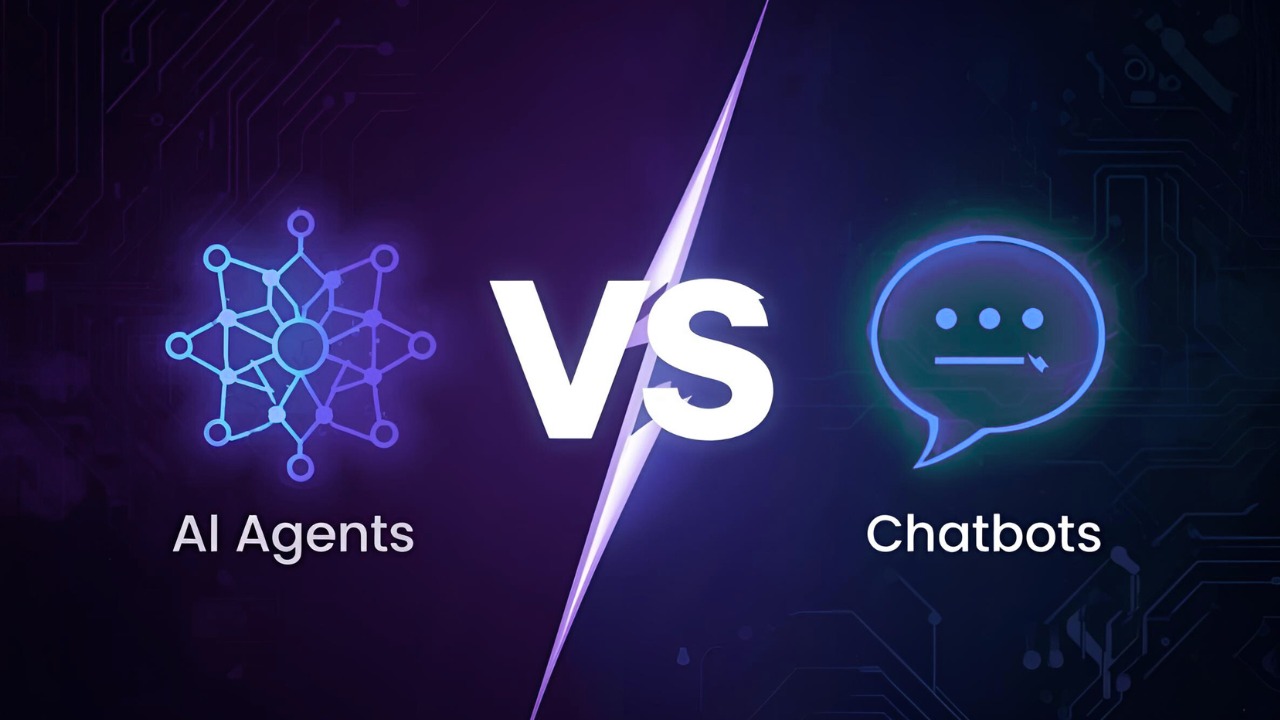
Top 10 Azure OpenAI Use Cases in 2025
By 2025, Azure OpenAI will revolutionize industries like never before.
AI is already a game-changer, but what businesses are doing with it now is just the beginning. Fast forward to 2025, and Azure OpenAI will take center stage, transforming industries in ways most articles aren’t even discussing yet. From hyper-personalized diagnostics in healthcare to optimizing space tech maintenance, the untapped opportunities are limitless.
This article dives deep into why Azure OpenAI is set to dominate and explores 10 Azure OpenAI use cases that will give businesses a real edge. If you’re a tech innovator, business leader, or AI enthusiast, get ready to challenge the ordinary and discover what’s possible.
Why Azure OpenAI Will Dominate in 2025
Azure OpenAI isn’t just about powerful machine learning models; it’s about its seamless integrations and how it transforms efficiency at scale. By 2025, here’s why it will lead the pack:
- Seamless Integrations: It’s compatibility with Azure Synapse, Power BI, and IoT creates a streamlined end-to-end solution for enterprise needs.
- Ethical AI Guardrails: Industry-specific compliance tools ensure that businesses in healthcare, finance, and beyond operate ethically and legally.
- Scalability and cost-efficiency: Azure OpenAI ensures businesses (whether an SME or an enterprise) can adopt AI without overwhelming their resources.
Combine these with a focus on security, innovation, and flexibility, and Azure OpenAI becomes the enterprise AI platform of choice.
Top 10 Azure OpenAI Use Cases in 2025

1. Hyper-Personalised Healthcare Diagnostics
Imagine AI analyzing MRI scans alongside a patient’s medical history in seconds. Azure OpenAI is enabling more accurate, faster diagnoses that could save lives. Hospitals will leverage their precision to tailor treatments like never before.
2. Climate Modelling & Sustainability Optimisation
With climate goals becoming non-negotiable, Azure OpenAI can simulate carbon footprints, optimize supply chains for sustainability, and predict energy use at scale. Businesses can meet green targets while saving costs.
3. Autonomous Code Generation for Legacy Systems
Migrating from COBOL or other outdated languages? Azure OpenAI can autonomously rewrite and optimize legacy code into modern languages like Python, saving organizations millions in technical debt.
4. AI-Driven Policy Design for Governments
Using AI to simulate policy outcomes before implementation, governments can design data-driven strategies for traffic, energy distribution, or urban growth, making them effective before problems arise.
5. Real-Time Multilingual Crisis Response
Disaster relief just got smarter. Azure OpenAI’s capabilities allow humanitarian organizations to coordinate efforts in multilingual environments while supporting low-resource languages in real time.
6. Dynamic Pricing for Micro-SMEs
Small businesses will no longer be left out of the AI revolution. AI-driven dynamic pricing models will bring micro-SMEs competitive advantages, optimizing their pricing strategies in hyper-local contexts.
7. AI-Powered Talent Matching for Gig Economy
Matching freelancers with projects is no longer a guessing game. Azure OpenAI uses semantic search and advanced analytics to connect the right talent with the right gig faster than ever.
8. Synthetic Data for Privacy-Compliant AI
Generating GDPR-compliant AI training datasets can unlock innovation in sensitive industries like fintech and healthcare. Azure OpenAI leads by creating synthetic data that safeguards privacy while feeding powerful models.
9. AI Curators for Educational Content
Azure OpenAI is redefining education by generating optimized K-12 lesson plans tailored to local curricula and personalized learning styles, aiding teachers and students alike.
10. Predictive Maintenance for Space Tech
Azure OpenAI, in partnership with Azure IoT, enables anomaly detection for satellites and space equipment, ensuring a system’s uptime, accuracy, and longevity in orbit.
Implementation Guide: Avoiding Common Pitfalls
Excited to explore what Azure OpenAI can do for your organization? Here’s how to avoid bumps in the road when implementing it in the real world.
- Cost Optimization: Consider whether your use case warrants GPT-3.5 or GPT-4. For many tasks, GPT-3.5 will strike the perfect balance between cost and capability.
- Prevent vendor lock-in: Use hybrid cloud strategies to maintain flexibility as AI platforms evolve.
- Data Security and Compliance: Follow industry regulations to the letter and utilize Azure’s robust tools to keep your implementation airtight.
The Future Beyond 2025
Think the advancements end here? Not quite. Beyond 2025, Azure OpenAI’s applications will hit even more revolutionary milestones, including:
- Quantum Computing Synergies: The integration of quantum processors with Azure OpenAI could open pathways to solve problems we haven’t even conceptualized yet.
- AI-Generated Intellectual Property: Expect AI-created innovations to spark debates about intellectual property laws and ethical considerations surrounding machine-generated inventions.
Start Taking Advantage of Azure OpenAI’s Power Today
From hyper-personalized healthcare to predictive space maintenance, the use cases for Azure OpenAI are diverse, forward-thinking, and transformative. By 2025, the businesses that thrive will be those exploring these opportunities today.
Don’t wait for the future—start building it. Stay ahead with these innovative strategies and explore the power of Azure OpenAI now!









